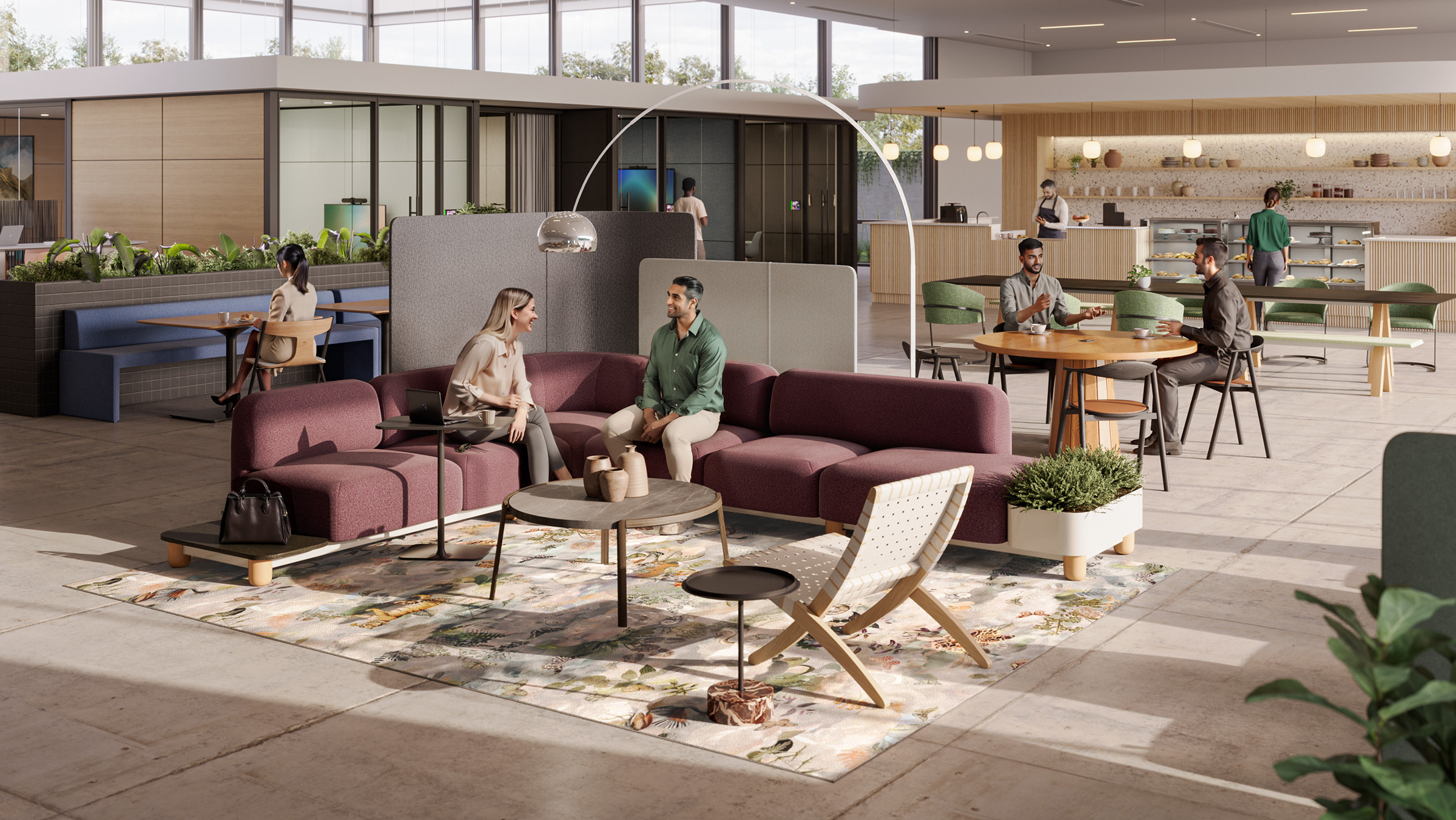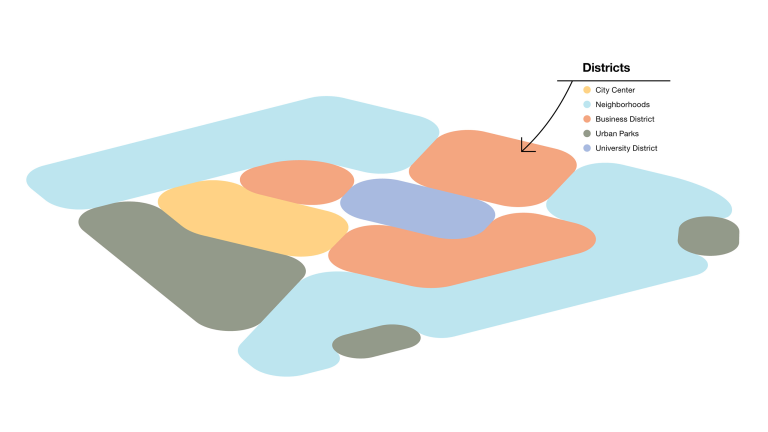
Humans thrive when they are part of a community. These connections are essential to our wellbeing and even our survival. In fact, the World Health Organization recently declared loneliness a “global public health concern,” launching a three-year international commission on social connection. It makes sense that our connection to others, or lack thereof, impacts our health. Since the beginning of time, people have relied on relationships with others for protection, support and joy.
While work and life today differ tremendously from when we hunted and gathered, community connections are still key to individual, team and organizational success. People who feel connected to others at work are more likely to be engaged, motivated and satisfied with their work. And Gallup reports that higher levels of engagement are connected to better business outcomes, including improved wellbeing, lower turnover, higher sales productivity (18%) and an increase in profitability (23%). Building relationships is clearly good for business.
Organizations can help by creating conditions that foster community. Communities are two things: places where we live and relationships we build.
Relationships and the places that nurture them build community. Community helps people and organizations thrive — even during times of rapid change. The NeuroLeadership Institute warns a ceaseless wave of change can lead to “change fatigue,” with real consequences like lost productivity, disengagement and turnover. But there’s a promise of greener grass if we can adapt and embrace change. Better, more fulfilling work and an improved sense of wellbeing are on the horizon.
“Everybody has a reason to encourage connection in the workplace. Creating relationships is not just good for individuals. It helps with job satisfaction, engagement, productivity and creativity.”
Connie Noonan HadleyFounder, Institute for Life at Work; Contributor, Harvard Business Review; Work Better Podcast S5:E1
Forces Changing Work Today
Four macro shifts are influencing work and changing patterns of behavior in the workplace. In some cases, the forces influencing work gradually increased over time. But in other instances, change snuck up on us.
 We spend more time collaborating on screen than in person. Many people (50%) stay at their desks and join meetings virtually instead of going to the meeting room. Why come into the workplace just to work alone? Our offices can do more to encourage people to come together.
We spend more time collaborating on screen than in person. Many people (50%) stay at their desks and join meetings virtually instead of going to the meeting room. Why come into the workplace just to work alone? Our offices can do more to encourage people to come together.
AI Supercycle
 AI is changing jobs and the skills people need. Opportunities for innovation and increased productivity are crating a “supercycle” – a period of economic growth driven by emerging technologies. Leaders are willing to invest in AI and most employees use it. But many leaders admit they have a limited understanding of AI today. So, how will AI impact the workplace?
AI is changing jobs and the skills people need. Opportunities for innovation and increased productivity are crating a “supercycle” – a period of economic growth driven by emerging technologies. Leaders are willing to invest in AI and most employees use it. But many leaders admit they have a limited understanding of AI today. So, how will AI impact the workplace?
Sustainability Mindset
 The number of companies setting significant sustainability targets keeps rising. The workplace brings people together to accelerate learning and innovation. Organizations want to create workplaces that support their goals by choosing partners who understand how to create sustainable environments using products in settings designed to evolve as needs change.
The number of companies setting significant sustainability targets keeps rising. The workplace brings people together to accelerate learning and innovation. Organizations want to create workplaces that support their goals by choosing partners who understand how to create sustainable environments using products in settings designed to evolve as needs change.
Wellbeing Urgency
 While mental health is not a new issue, it is more urgent with a rise in anxiety, depression and burnout, and there are new employee expectations that organizations will take action to support mental health. Researchers and designers know that the places people work can greatly impact how people feel throughout their day.
While mental health is not a new issue, it is more urgent with a rise in anxiety, depression and burnout, and there are new employee expectations that organizations will take action to support mental health. Researchers and designers know that the places people work can greatly impact how people feel throughout their day.
Many organizations aren’t sure how to adapt their workplace to help employees thrive during times of change and upheaval. Leaders are looking for answers, and some are stuck — doing the same thing they have done in the past or simply doing nothing. This may explain why so many employees come to offices that look like they did five or 10 years ago which are often underutilized or underperforming. Some spaces are rarely used — or not used for their intended purpose; some lounge areas sit empty or large conference rooms are occupied by just one or two people. In other cases, people can’t find the space they need as they look for privacy or a video-enabled meeting room.
There’s a mismatch between the work being done and the places people have available to do that work. Finding the right solution is complicated by the changing patterns of office attendance. While some organizations are still settling into hybrid work patterns, others expect people to be in the office every day. But whether people connect in person daily or for the part of the week, creating a better workplace where they can optimize their time together is essential.
Steelcase data analysis indicates some changes are being made to improve the office experience. Organizations are adding privacy elements such as screens or pods. They may be getting new chairs to say “welcome back” to employees coming to the office more often. But these beginnings are just scratching the surface of what people need. Many leaders and employees miss the vibrancy and energy a great community provides.
Lessons From Urban Planning
Workplaces share the common purpose with cities: when they serve the needs of people, both thrive. And both lose their vibrancy and appeal when they fail to keep people at the center of decisions made about their future. Lessons from successful urban planning principles can be applied to the workplace to help people and organizations be more resilient, perform better and flourish in the face of disruption.
One of the most influential modern thinkers about urban planning was Jane Jacobs, an activist in New York and Toronto in the mid-twentieth century. She fought against projects that called for the destruction of historic buildings and displacement of low-income families in favor of multi-lane highways and high-rise buildings. Those supposed “urban renewal” projects created places where no one wanted to live and were ultimately abandoned.
Jacobs argued the city is about people and should serve their interests. She believed in the wisdom of people to know what they need and that neighborhoods become better when urban planners include members of the community in shaping its future. Just as the city requires infrastructure for transportation or utilities, it also needs social infrastructures: places for people to gather and interact regularly. It needs to be inviting residential spaces for privacy and solitude amidst the bustle. Jacobs supported mixed-use buildings, lively sidewalks and a mixture of parks, cafes and libraries as places that increase social interaction, which she observed led to people feeling more connected and accountable to one another. She felt cities should be dynamic, like ecosystems that adapt to changing conditions.
Jacobs’ work was seminal and influenced how urban planners think about creating resilient cities today. Their ideas can be translated to the workplace to help people and organizations prosper.
“Community at work isn’t just about socializing; it’s about building trust and support networks that help us thrive personally and professionally.”
Jacqui BrasseyCo-leader of Healthy Workforces and Director of Research Science at the McKinsey Health Institute
Core Principles
Density
Balance bringing people close enough to connect, but not be overcrowded
Diversity
Blend different types of spaces and office layout patterns
Short Blocks
Break up any long distances between spaces to encourage people to linger
Lively Sidewalks
Create natural gathering spaces like cafes or small gardens to bring people into the open
Mixed-use Spaces
Encourage energy and convenience when you blend different functions together in one area
Community Involvement
Engage local expertise from people who “live” in the community
What is Community-Based Design?
Drawn from urban planning principles and decades of Steelcase research, Community-Based Design helps create thriving, resilient workplaces. It includes three distinct phases: understanding people’s needs, designing a range of spaces and experiences, and measuring the workplace.
The building blocks of community
Like a vibrant city, the Community-Based Design method recommends a range of spaces within mixed-use “districts” to create dynamic, inspiring workplaces. These districts offer people choice and control, support multiple types of work and promote wellbeing. This pragmatic approach to workplace design creates more desirable spaces that get used more often and are easier to adapt when it’s necessary to make a change.
Creating communities begins with understanding people and how they work. Those work activities determine the types of settings and spaces needed to get work done. These are the building blocks of community. Settings perform better when clustered together in mixed-use “districts” that offer a range of spaces to support related types of work. The five districts create the physical infrastructure of a thriving community.
While each district supports a primary type of work, it also gives people a variety of places to work in different ways—to focus, collaborate, socialize, learn and rejuvenate.
 |
 |
|
City Center A social hub that is the heart of the community — a centralized connection point that draws people to help them build bonds and trust. |
Neighborhoods A home base for individuals and teams — a place where the heads-down work gets done and teams stay connected. |
 |
 |
|
Business District A diverse range of shared spaces where people come together to meet, share, brainstorm and collaborate — an environment that sparks creativity and innovation. |
University District A communal area dedicated to individual and group learning that supports both structured and informal experiences — a place to foster a culture of lifelong learning. |
 |
|
|
Urban Parks Community destinations where people can find respite and rejuvenation — places to renew and care for their wellbeing. |
Community-Based Design Works Better
Community is the glue that holds people together during times of change and adversity. When people feel a sense of community, they are far more likely to be engaged and productive, have higher levels of wellbeing and achieve better results. The workplace is a strategic asset organizations can use as the infrastructure for building community. But today it doesn’t always meet the changing ways people are working.
Getting started is not difficult. You can begin one space at a time or choose to apply Community-Based Design principles to create one or two districts.
The forces changing work today are impacting organizations of all sizes. Community-Based Design can be scaled up or down to support new patterns of behavior in the workplace. It creates flexible and adaptable spaces that provide more value over time. The important thing is to take the first step.

